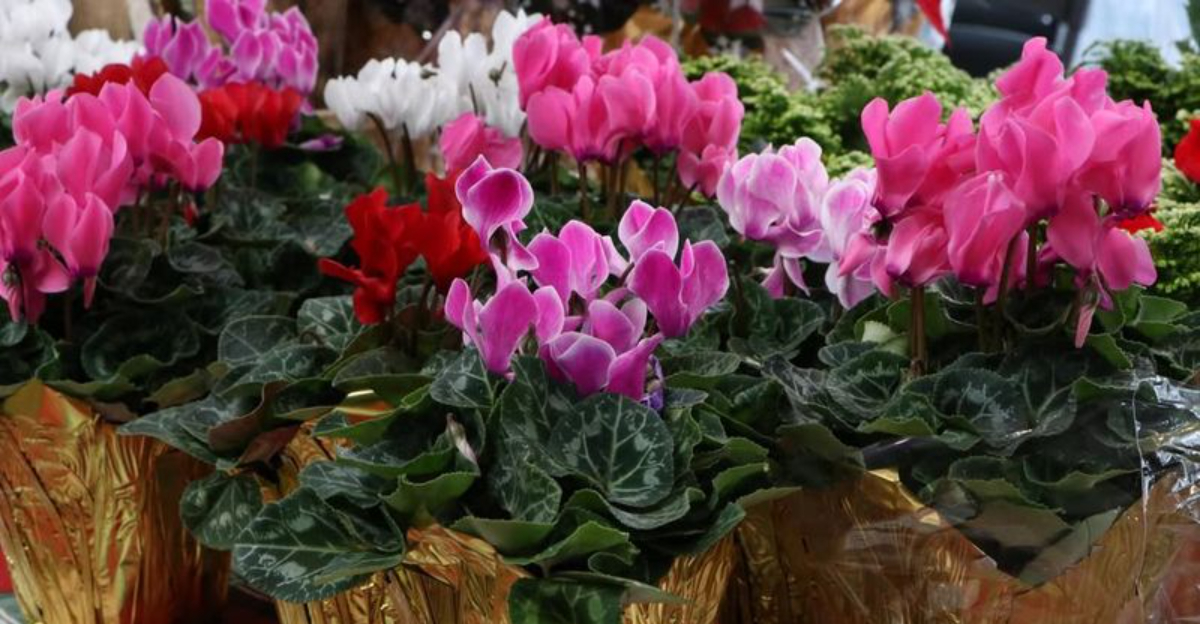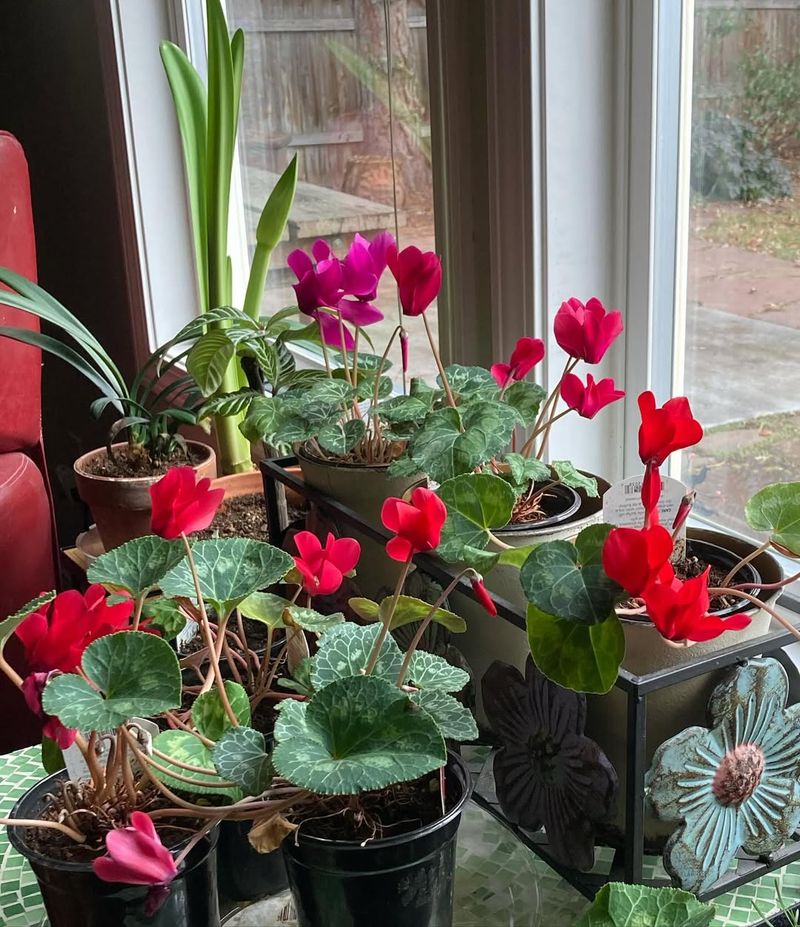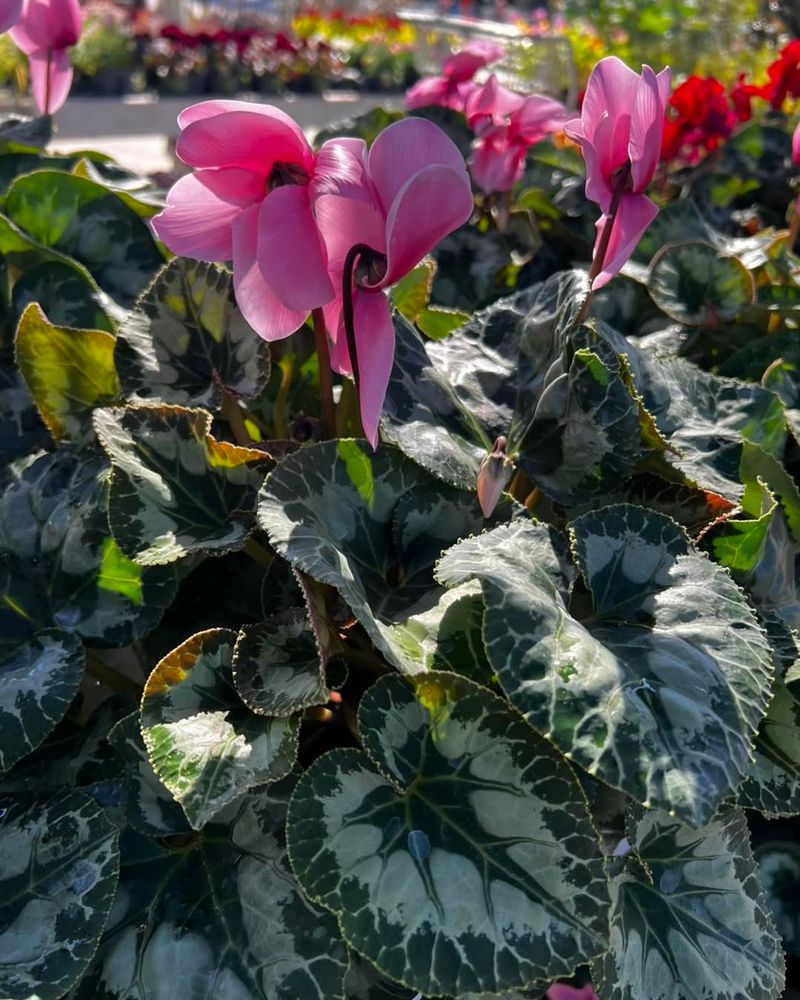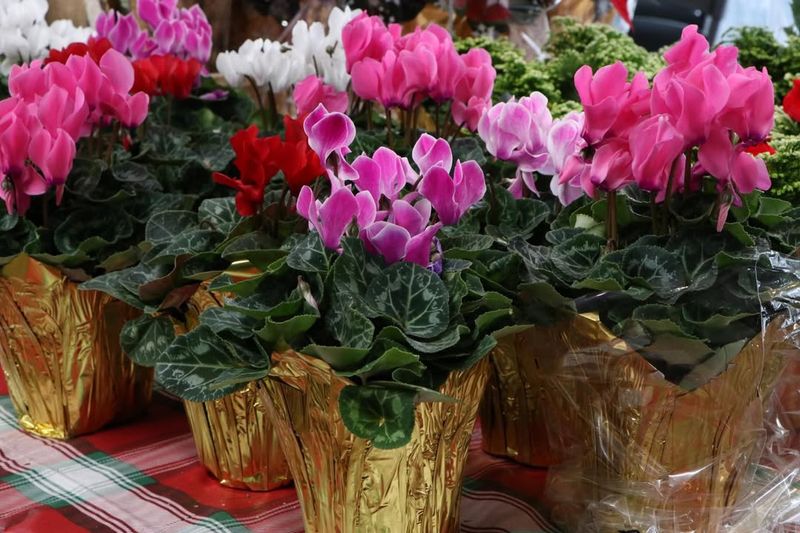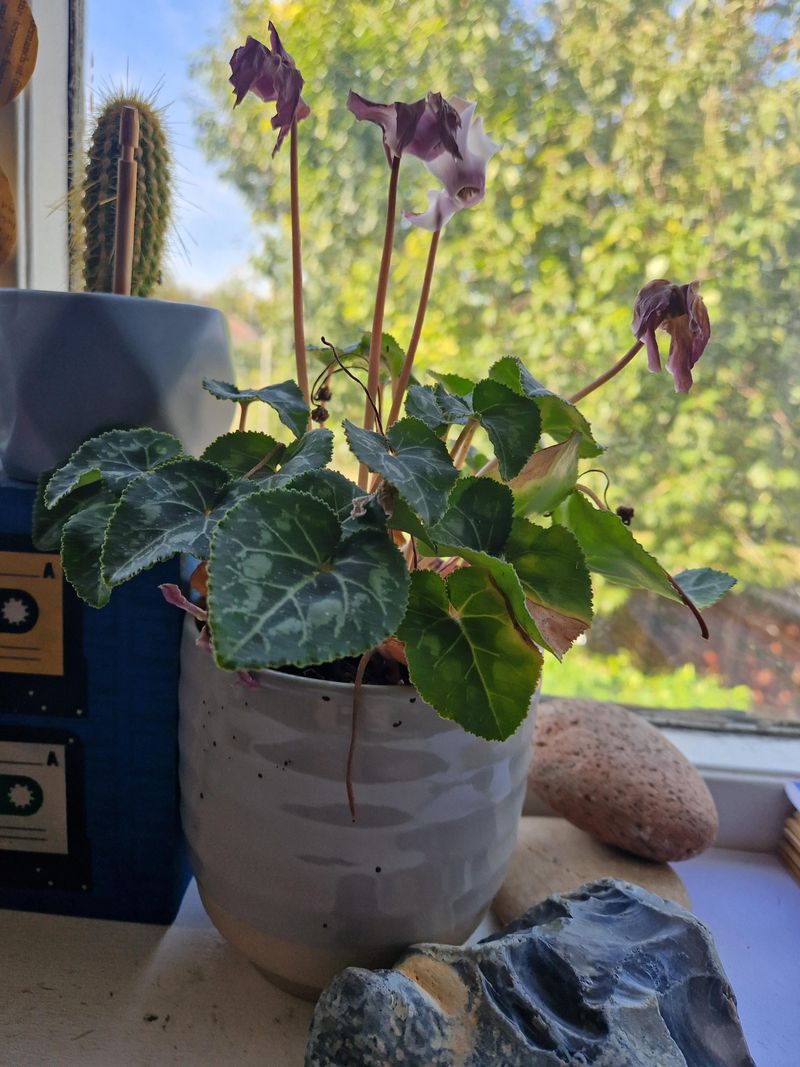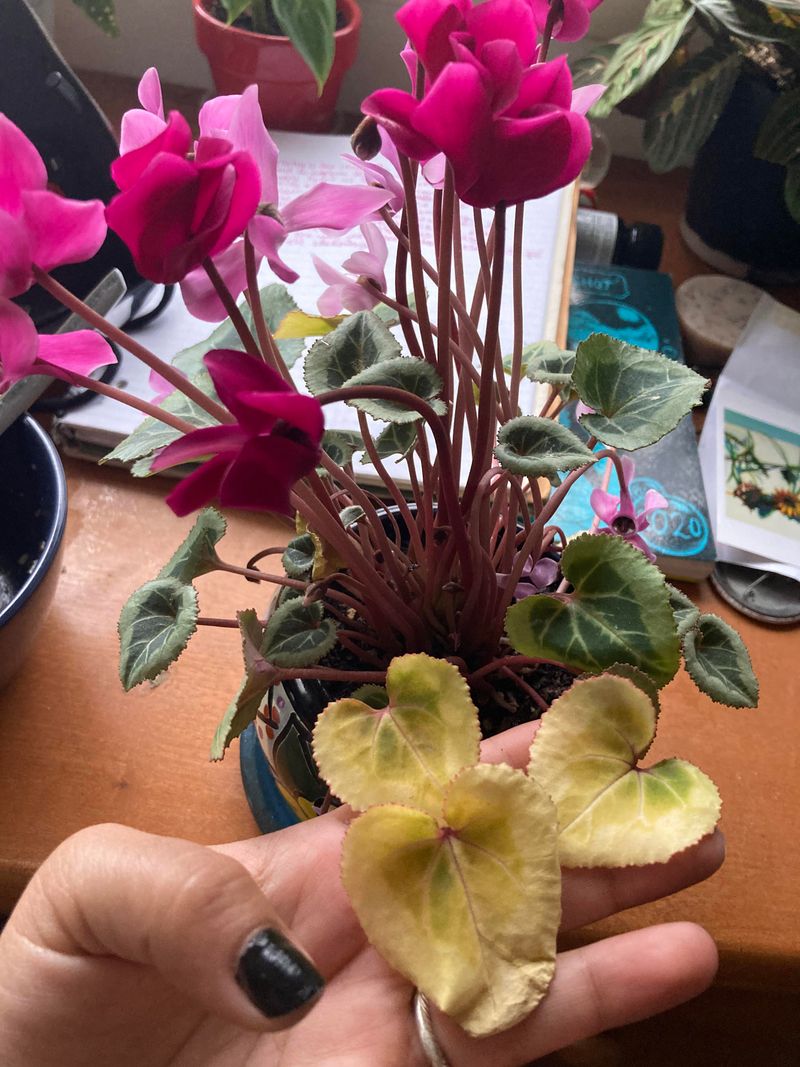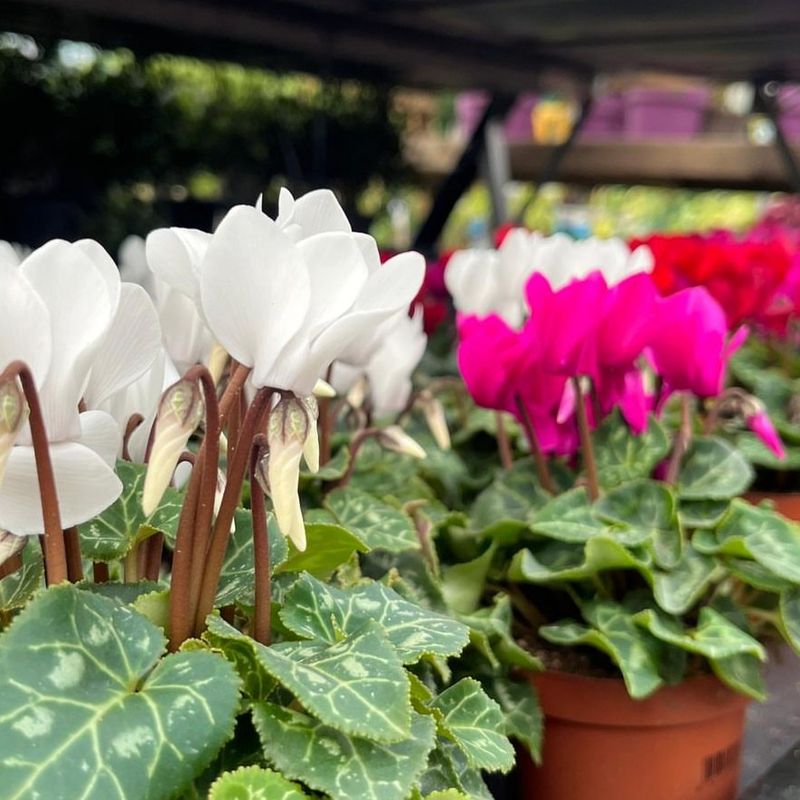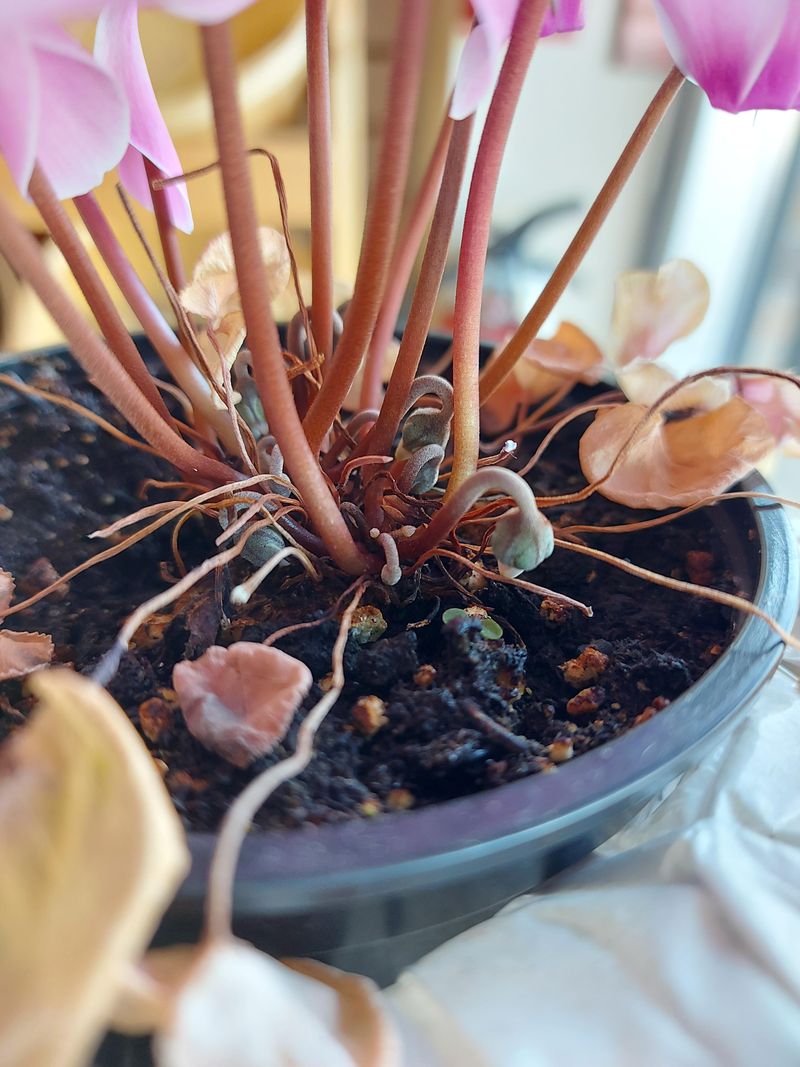Cyclamen plants bring vibrant color to Oregon gardens during the darker winter months, but keeping them healthy through December takes some special care.
With the right techniques, your cyclamen can stay beautiful and blooming even when the weather turns cold and wet.
Oregon gardeners have learned some smart tricks to help these delicate flowers thrive in our unique climate.
Water From The Bottom Up
Cyclamen roots drink best when water comes from below rather than splashing on top. Fill a saucer with water and let your pot sit in it for about fifteen minutes, allowing the soil to soak up moisture naturally.
This method keeps the crown and leaves dry, preventing rot that commonly destroys cyclamen.
Oregon’s rainy weather means indoor plants need careful watering to avoid too much dampness. Empty any leftover water from the saucer after the soil feels moist to the touch.
Find The Sweet Spot For Temperature
Cool temperatures make cyclamen happier than most houseplants, thriving best between 50 and 65 degrees Fahrenheit. Place yours near a window where it gets fresh air but stays away from heating vents that blast warm, dry air.
Oregon homes often have cooler rooms perfect for these plants, like sunrooms or north-facing bedrooms. Nighttime temperatures that dip slightly lower actually encourage more blooms.
Your cyclamen will reward you with longer-lasting flowers when kept comfortably cool rather than toasty warm.
Give Them Bright But Filtered Light
Bright indirect sunlight keeps cyclamen leaves vibrant and encourages steady flowering throughout December. Direct afternoon sun can scorch the delicate petals and leaves, so position your plant where light filters through curtains or comes from morning hours.
East-facing windows work wonderfully in Oregon homes, providing gentle morning rays without harsh intensity.
Rotate your pot every few days so all sides receive equal light exposure. Balanced lighting prevents the plant from leaning awkwardly toward one direction while promoting even growth.
Remove Spent Blooms Regularly
Deadheading might sound fancy, but it simply means removing old flowers before they turn mushy. Gently twist and pull the entire stem from the base rather than cutting it with scissors, which can leave stubs that rot.
Regular removal tells the plant to produce fresh blooms instead of making seeds. Check your cyclamen every few days during December to keep it looking tidy and encourage continuous flowering.
This simple habit takes only minutes but dramatically extends the blooming season and keeps your plant attractive.
Watch For Yellowing Leaves
Yellow leaves often signal overwatering, the number one destroyer of cyclamen plants during Oregon’s wet winter months. When you spot yellowing foliage, reduce watering frequency and check that your pot has proper drainage holes.
Remove yellow leaves the same way you remove spent flowers—by gently twisting them off at the base. Sometimes a few yellow leaves are normal as older growth naturally withers away.
Pay attention to patterns: many yellow leaves appearing suddenly usually means adjusting your care routine is necessary.
Feed Lightly During Blooming Season
Cyclamen appreciate a light snack of diluted liquid fertilizer every two weeks while actively blooming through December. Use a balanced houseplant fertilizer mixed at half the recommended strength to avoid burning the sensitive roots.
Too much food causes more leaf growth instead of flowers, which defeats your goal of keeping blooms coming.
Apply fertilizer only to moist soil, never to dry roots that could get damaged. Skip feeding altogether if your plant looks stressed or stops producing new buds temporarily.
Protect From Drafts And Sudden Changes
Cyclamen dislike sudden temperature swings or cold drafts from frequently opened doors and windows. Position your plant away from entryways where chilly December air rushes in whenever someone comes home.
Oregon’s coastal winds and valley weather can create drafty conditions that stress these sensitive plants. Similarly, avoid placing cyclamen near fireplaces or wood stoves where temperatures fluctuate dramatically.
Stable conditions help your plant focus energy on producing gorgeous blooms rather than recovering from environmental stress throughout the winter months.

